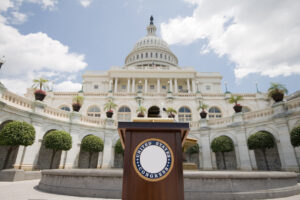The secret to earned media coverage during COVID-19
The global pandemic has exacerbated and accelerated changes in the media landscape. To be successful media relations pros, PR practitioners must show unprecedented fidelity to a good story.

Imagine, if you can, a time when most of humanity had never heard of coronavirus. Although it may seem like that era of blissful ignorance existed sometime last decade, it was only several short months ago.
Since then, everyone (and I mean literally every single person in the world) has undergone profound, jarring and life-altering changes in some way in a very short period of time. Yet, these seismic changes will have lasting implications on every aspect of our lives for year to come.
Intensified and accelerated trends
For journalists, who help to make sense of the world around us, this change has required most of them to rapidly learn on the fly as events take on their own relentless momentum. Often, this necessitates quickly shifting from covering one aspect of the crisis to another. This includes putting into context the economic implications COVID-19 has wrought in our communities, the complexity surrounding infection rates, contact tracing and testing infrastructure across states, and the psychological, emotional and physical health challenges of an entirely new work paradigm.
In response, it has become incumbent upon PR professionals, if they expect to gain any traction with overwhelmed journalists, to make sure the information, resources and content they’re presenting is pithy, focused and differentiated in multi-sensory formats to adhere to news consumption habits.
What does this mean in a practical sense for PR professionals? That means taking the time to perform real research and speaking with subject matter experts, analysts, medical personnel and government representatives, among others, to truly understand the topic as much as possible before developing a story pitch and a delivery format.
And given the 24/7 nature of the crisis and the coverage, whatever content is produced had better have a clear and compelling connection to the circumstances at hand because nothing else—again, literally—truly matters. COVID-19 is the mother of all contexts.
Social media and storytelling
With reporters careening from one element of the story to another, it can be difficult to keep pace with what might draw their interest—and how best to get in front of them. This is when the pervasiveness of social media can yield valuable dividends, offering manageable chunks of information that can be easily digested and shared, as well as another avenue through which to reach journalists.
In fact, as journalists develop their own stories, they do it with the objective and expectation that it will be shared widely on social media platforms. They need eye balls and clicks. This is fundamental to the news business paradigm.
Always bear in mind that journalists, given current demands, have little time to sit down for a big text meal. So, to gain their favor, it is necessary to spoon-feed them bite-sized info-nuggets that provide, as Rod Sterling might say, “the dimension of sight, the dimension of sound”.
In the end, PR success during the COVID-19 crisis comes down to customization of source material to accommodate the journalistic imperatives of accuracy, relevance, usefulness and sensory stimulation.
Do that, and the reward will be the earned media Holy Grail: coverage.
Gregg Castano is the founder and CEO of News Direct.






